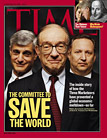 Going into this fourth of July weekend, we learned that the U.S. economy shed 125,000 jobs from May to June and that 16.5% of Americans are either unemployed, involuntary working part-time, or have given up looking. (That’s the “U-6 unemployment rate.”) We also learned that median duration of unemployment is now almost six months; it rose to 25.5 weeks, up from 18.2 weeks a year ago.
Going into this fourth of July weekend, we learned that the U.S. economy shed 125,000 jobs from May to June and that 16.5% of Americans are either unemployed, involuntary working part-time, or have given up looking. (That’s the “U-6 unemployment rate.”) We also learned that median duration of unemployment is now almost six months; it rose to 25.5 weeks, up from 18.2 weeks a year ago.
 Last week the House of Representatives voted to extend unemployment benefits for the long-term unemployed, as is customary in times of very high unemployment, but the Senate failed to do the same. The 58-38 vote in favor was not enough to overcome that repugnant, anti-democratic obstacle known as the filibuster. Senate Minority Leader Mitch McConnell said he and the Republicans could not support the extension of benefits unless they were paid for with equivalent spending cuts elsewhere, like in the stimulus bill. In other words, prudence dictates that we rob Peter to pay Paul.
Last week the House of Representatives voted to extend unemployment benefits for the long-term unemployed, as is customary in times of very high unemployment, but the Senate failed to do the same. The 58-38 vote in favor was not enough to overcome that repugnant, anti-democratic obstacle known as the filibuster. Senate Minority Leader Mitch McConnell said he and the Republicans could not support the extension of benefits unless they were paid for with equivalent spending cuts elsewhere, like in the stimulus bill. In other words, prudence dictates that we rob Peter to pay Paul.
It’s one thing to be against a stimulus package because the country’s debt level is too high. It’s not my position, but it is the position of reasonable, otherwise Keynesian-minded economists like Willem Buiter and Jeffrey Sachs. But traditionally a big thing that mitigates recessions is the “automatic stabilizers” of which occur even without Congress passing new tax cuts or spending programs. Taxes go down because incomes are down, and spending on unemployment and welfare benefits goes up because more people qualify for them. For Congress to cut off one of the most important automatic stabilizers is not only callous but sheer idiocy. Yes, the national debt is a problem, but there are fates worse than debt. Obsessing about debt during an economic depression is like worrying about cellulite while you’re starving to death. (Krugman piles on here and here.)
Here’s hoping that the ranks of the unemployed soon include McConnell and the other senators who opposed extending unemployment benefits. (The would be every Republican except the two from Maine, and Democrat Ben Nelson.)



